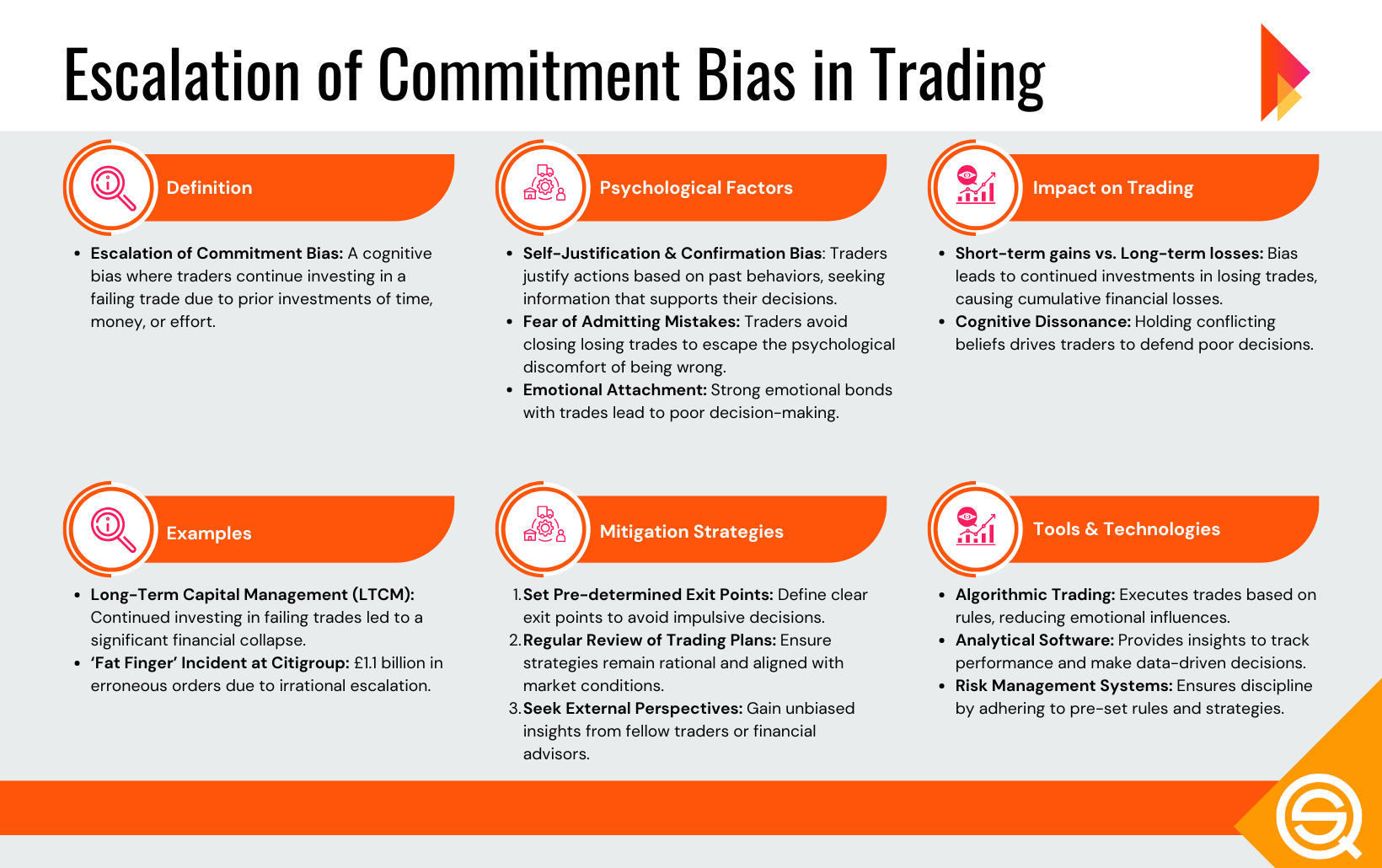Did you know that some traders believe algorithms are just like cooking recipes—follow the steps precisely, and you’ll whip up a profitable dish? In this article, we delve into the essential components of optimizing algorithmic strategies for day trading. You’ll learn what algorithmic strategies are, how to select the right one for your trading style, and the key factors to consider for optimization. We'll also cover effective backtesting methods, the best tools for development, and the impact of market conditions on performance. Avoid common pitfalls, discover how to incorporate machine learning, and understand the metrics to evaluate your algorithms. Plus, we’ll discuss adapting to market trends, risk management, and automation techniques. Stay compliant with trading regulations and keep your strategies updated with the latest innovations, all while ensuring your algorithms are aligned with best practices. With insights from DayTradingBusiness, you’ll be well-equipped to enhance your trading game!
What are algorithmic strategies in day trading?
Algorithmic strategies in day trading involve using automated systems to execute trades based on predefined criteria. To optimize these strategies, focus on the following:
1. Backtesting: Use historical data to evaluate how your algorithm would have performed. Adjust parameters based on results.
2. Risk Management: Implement stop-loss orders and position sizing to limit potential losses.
3. Market Conditions: Adapt strategies to different market environments, like trending or ranging markets.
4. Execution Speed: Ensure low-latency connections to minimize delays in order execution.
5. Continuous Monitoring: Regularly assess performance and make adjustments based on changing market conditions or strategy performance.
6. Diversification: Use multiple strategies or assets to spread risk and increase opportunities.
These steps help enhance the effectiveness of algorithmic trading in day trading scenarios.
How do I choose the right algorithm for my trading style?
To choose the right algorithm for day trading, first define your trading style—are you focusing on scalping, momentum, or mean reversion? Next, consider the market conditions you prefer, like volatility and liquidity. Analyze algorithms based on their historical performance, risk management features, and backtesting results. Look for an algorithm that aligns with your risk tolerance and capital size. Finally, ensure it integrates smoothly with your trading platform and allows for real-time adjustments as market conditions change.
What factors should I consider when optimizing my trading algorithms?
Consider these factors when optimizing your trading algorithms:
1. Market Conditions: Analyze how different strategies perform in varying market conditions, such as trending vs. ranging markets.
2. Backtesting: Use historical data to test your algorithms, ensuring they perform well across multiple time frames and market scenarios.
3. Execution Speed: Optimize for low latency to ensure your trades execute quickly, reducing slippage and improving profitability.
4. Risk Management: Implement stop-loss and take-profit levels to manage risk effectively and protect your capital.
5. Parameter Tuning: Adjust algorithm parameters based on performance metrics to find the optimal settings without overfitting.
6. Diversification: Consider diversifying strategies to spread risk and improve overall performance.
7. Cost Considerations: Account for trading fees, commissions, and market impact when evaluating strategy profitability.
8. Real-time Data: Ensure access to reliable real-time data feeds for accurate decision-making during trading.
9. Regulatory Compliance: Stay informed about regulations that may affect algorithmic trading in your region.
10. Continuous Monitoring: Regularly review and adjust your algorithms based on changing market dynamics and performance metrics.
How can I backtest my algorithmic strategies effectively?
To backtest your algorithmic strategies effectively, follow these steps:
1. Use Historical Data: Gather high-quality historical price data for the assets you’re trading. Ensure it includes various market conditions.
2. Choose a Backtesting Platform: Select a reliable backtesting software or platform like MetaTrader, TradingView, or Python libraries such as Backtrader.
3. Define Your Strategy: Clearly your entry and exit signals, risk management rules, and trade size.
4. Run the Backtest: Execute your strategy on the historical data. Check for different time frames to assess performance consistency.
5. Analyze Results: Review key metrics like win rate, return on investment, maximum drawdown, and Sharpe ratio.
6. Optimize Parameters: Adjust your strategy parameters and re-run the backtest to find the optimal settings without overfitting.
7. Walk-Forward Analysis: Validate your strategy by testing it on out-of-sample data to ensure it performs well in unseen conditions.
8. Document Findings: Keep detailed records of your backtesting results and any adjustments you make for future reference.
By systematically following these steps, you can effectively backtest and optimize your day trading strategies.
What tools are best for developing day trading algorithms?
The best tools for developing day trading algorithms include:
1. Python: Widely used for its libraries like Pandas, NumPy, and TA-Lib for data analysis and technical indicators.
2. R: Excellent for statistical analysis and provides packages like quantstrat for strategy testing.
3. MetaTrader 4/5: Popular platforms with built-in scripting language (MQL4/MQL5) for custom indicators and automated trading.
4. TradingView: Offers Pine Script for developing and backtesting strategies with an easy-to-use interface.
5. QuantConnect: A cloud-based platform that supports multiple languages and extensive backtesting capabilities.
6. Interactive Brokers API: Allows direct market access and supports various programming languages for custom trading strategies.
7. Backtrader: A Python library specifically designed for backtesting trading strategies.
Choosing the right tool depends on your programming skills, the complexity of your strategies, and the market you’re targeting.
How do market conditions affect algorithmic trading performance?

Market conditions significantly impact algorithmic trading performance by influencing volatility, liquidity, and trends. In volatile markets, algorithms may execute trades faster but can also trigger more false signals. Low liquidity can widen spreads, reducing profitability. Trending markets can enhance strategy performance, while choppy markets often lead to losses. To optimize algorithmic strategies for day trading, adjust parameters based on current market conditions, incorporate real-time data analysis, and use risk management techniques to adapt to changing environments.
What common mistakes should I avoid when optimizing trading algorithms?
1. Overfitting: Avoid tailoring your algorithm too closely to historical data, as it may not perform well in live trading.
2. Ignoring Transaction Costs: Factor in commissions and slippage; they can significantly impact profitability.
3. Lack of Testing: Don’t skip backtesting and forward testing under varied market conditions to validate your strategy.
4. Poor Risk Management: Always set stop-loss orders and position sizing to protect your capital from large losses.
5. Focusing Only on Returns: Assess drawdowns and risk-adjusted returns; high returns with high risk can lead to significant losses.
6. Neglecting Market Conditions: Ensure your strategy is adaptable to different market environments and not just optimized for one.
7. Emotional Trading: Stick to your algorithm without letting emotions or market noise influence your decisions.
8. Ignoring Data Quality: Use high-quality, reliable data for backtesting; poor data can lead to misleading results.
How can I integrate machine learning into my day trading strategies?
To integrate machine learning into your day trading strategies, start by collecting historical market data, including price movements, volume, and technical indicators. Use this data to train models like decision trees, neural networks, or support vector machines, focusing on predicting price movements or identifying patterns.
Next, implement feature engineering to enhance model input—consider factors like moving averages, RSI, or MACD. Backtest your models on historical data to evaluate performance and refine them based on results.
Once optimized, deploy the models in a simulated trading environment before applying them to real trades. Continuously monitor and adjust your models based on live market data to adapt to changing conditions.
What metrics should I use to measure algorithm performance?
To measure algorithm performance in day trading, focus on these key metrics:
1. Sharpe Ratio: Assesses risk-adjusted returns. A higher ratio indicates better performance relative to risk taken.
2. Win Rate: The percentage of profitable trades. A high win rate suggests effective strategies.
3. Profit Factor: The ratio of gross profit to gross loss. A value above 1 indicates profitability.
4. Maximum Drawdown: Measures the largest peak-to-trough decline. Lower values indicate better risk management.
5. Average Trade Duration: Helps evaluate the holding period of trades, influencing strategy adjustments.
6. Return on Investment (ROI): Total return relative to investment. It provides a clear picture of profitability.
7. Volatility: Indicates the price fluctuation of the traded assets. Understanding volatility helps in risk assessment.
These metrics will give you a comprehensive view of your algorithm's effectiveness in day trading.
How do I adapt my algorithms to changing market trends?

To adapt your algorithms to changing market trends in day trading, start by integrating real-time data feeds to monitor market conditions. Use machine learning techniques to analyze historical data for pattern recognition and adjust your algorithms based on performance metrics. Implement a feedback loop that allows your algorithms to learn from recent trades, refining strategies dynamically. Regularly backtest your algorithms against current market scenarios to ensure they remain effective. Finally, stay informed about economic indicators and news events that influence market behavior, and adjust your trading parameters accordingly.
What role does risk management play in algorithmic trading?
Risk management is crucial in algorithmic trading as it helps protect capital and minimize losses. It involves setting stop-loss orders, position sizing, and diversification to mitigate potential risks. Effective risk management ensures that algorithms can withstand market volatility and adhere to predefined risk tolerance levels. By incorporating risk assessments, traders can optimize their strategies, making data-driven adjustments to improve performance while safeguarding against adverse market conditions.
How can I automate my day trading processes with algorithms?
To automate your day trading processes with algorithms, follow these steps:
1. Choose a Trading Platform: Use platforms like MetaTrader, TradingView, or QuantConnect that support algorithmic trading.
2. Learn a Programming Language: Familiarize yourself with languages like Python or R, which are commonly used for developing trading algorithms.
3. Develop a Strategy: Create a clear trading strategy based on technical indicators, price action, or market trends.
4. Backtest Your Strategy: Use historical data to test your algorithm’s performance under various market conditions.
5. Implement Risk Management: Integrate stop-loss and take-profit orders to manage risk.
6. Deploy the Algorithm: Once satisfied, set your algorithm to run in a live environment with real capital.
7. Monitor Performance: Regularly review the algorithm’s performance and make adjustments as necessary.
8. Stay Updated: Continuously learn and adapt your strategies based on market changes and new research.
By following these steps, you can effectively automate your day trading processes using algorithms.
Learn about How to Automate My Day Trading with Bots?
What are the best practices for monitoring algorithmic trading results?
The best practices for monitoring algorithmic trading results include:
1. Set Clear KPIs: Define key performance indicators like return on investment (ROI), win rate, and maximum drawdown to evaluate performance.
2. Real-Time Data Monitoring: Use real-time dashboards to track trades, market conditions, and performance metrics continuously.
3. Regular Backtesting: Periodically backtest your algorithms against historical data to assess their effectiveness and tweak strategies as needed.
4. Performance Review: Conduct daily and weekly performance reviews to identify trends, anomalies, and areas for improvement.
5. Risk Management: Implement strict risk management rules, including stop-loss orders and position sizing, and monitor their adherence.
6. Adjust for Market Conditions: Stay adaptable. Monitor changes in market volatility and liquidity, and adjust your strategies accordingly.
7. Automated Alerts: Set up alerts for significant performance changes, trade execution failures, or market events that impact your strategies.
8. Documentation: Keep detailed records of trades, decisions made, and algorithm performance to facilitate learning and strategy refinement.
9. Simulations: Use paper trading to simulate strategies under different market conditions without risking real capital.
10. Peer Reviews: Collaborate with other traders or analysts to review strategies and gain new perspectives on performance.
Learn about Best Practices for Monitoring Economic Data Releases in Day Trading
How do I stay updated on algorithmic trading innovations?
To stay updated on algorithmic trading innovations, follow these steps:
1. Read Industry Blogs: Subscribe to blogs like QuantInsti, Alpha Architect, or the Quantitative Finance subreddit for insights on new strategies and technologies.
2. Join Online Communities: Engage with forums such as Elite Trader or Stack Exchange to discuss trends and share experiences with other traders.
3. Follow Research Papers: Regularly check platforms like arXiv for the latest academic research on algorithmic trading techniques and models.
4. Attend Webinars and Conferences: Participate in events like the Quantitative Finance Conference to network and learn about cutting-edge developments.
5. Utilize Social Media: Follow thought leaders and experts on Twitter and LinkedIn who share updates and innovations in algorithmic trading.
6. Explore Financial News: Keep an eye on financial news outlets that cover technology advancements impacting trading strategies.
7. Experiment with Tools: Use platforms like QuantConnect or Alpaca to test and adapt your strategies based on the latest technologies.
By combining these resources, you can effectively track innovations in algorithmic trading.
Learn about How to Stay Updated on Emerging Day Trading Patterns
What legal considerations should I be aware of with algorithmic trading?
Understand market regulations, including SEC and FINRA rules. Ensure compliance with anti-manipulation laws to avoid market abuse. Be aware of data privacy laws if using personal data. Check your brokerage’s specific guidelines for algorithmic trading. Consider intellectual property rights regarding your algorithms. Maintain robust risk management practices to meet regulatory standards.
How can I ensure my algorithms are compliant with trading regulations?

To ensure your algorithms comply with trading regulations, follow these steps:
1. Understand Regulations: Familiarize yourself with relevant regulations like SEC rules, FINRA guidelines, and specific exchange rules.
2. Risk Management: Implement risk controls to prevent excessive losses and ensure adherence to capital requirements.
3. Data Integrity: Use accurate, reliable data sources for your algorithms to avoid market manipulation.
4. Testing: Rigorously backtest and forward-test your algorithms in various market conditions to ensure they perform as expected.
5. Audit and Documentation: Maintain detailed records of your algorithm's performance and decision-making processes for compliance audits.
6. Continuous Monitoring: Regularly monitor algorithm performance and trading activity to quickly identify and rectify any compliance issues.
7. Legal Consultation: Consult with legal experts in trading regulations to ensure your strategies align with current laws.
Implementing these practices will help optimize your algorithmic strategies while ensuring compliance with trading regulations.
Conclusion about How to Optimize Algorithmic Strategies for Day Trading
In conclusion, optimizing algorithmic strategies for day trading involves a thorough understanding of your trading style, diligent backtesting, and the integration of advanced tools and techniques like machine learning. Staying informed about market conditions and adhering to best practices in risk management are crucial for success. By continuously evaluating your algorithms against performance metrics and adapting to market trends, you can enhance your trading effectiveness. For comprehensive guidance and support in navigating these complexities, consider leveraging the resources offered by DayTradingBusiness.
Learn about How to Optimize Your Day Trading Charts for Performance